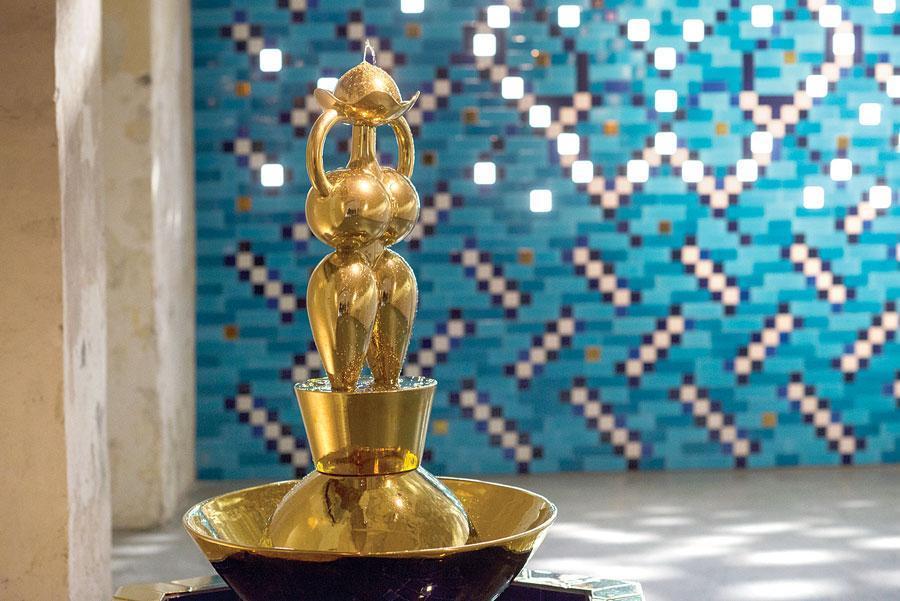
Kale Group, as part of their 2018 art project, supports artist Elif Uras’s new site specific installation. The installation “The Source” proves Uras’s singular vision of the complex, ever-changing relationship between Western modernity and traditional features of Eastern art and culture.
While Uras takes her inspiration from Istanbul’s history, power of women, geography and culture, once again she opens her vision on figuration and abstraction, showing how she relates these notions with painting and ceramic.
Speaking during the press meeting held for the opening of the exhibition in Galata Greek School, Kale Group CEO and President, Zeynep Bodur said, it is important to support art in Turkey. Bodur also said, as Kale Group, we support women’s place in society which coincides with the works of Uras.
The project, realized under the leadership of Galerist, features a tiled wall, ceramic fountain and drawings.
Uras uses different kinds of sources to define culture, history, women’s place in society. The site-specific work draws attention to cultural references. The work in fact started as a monograph, said Uras during the press meeting. However, later on the idea of creating a book came along with an installation, she added.
Noting that she tried to emphasize the importance of Istanbul’s cultural heritage in this work, Uras said, the idea of shared heritage, history and culture are the main issues feeding the site specific installation.
Uras likes to use traditional materials such as ceramics and blend these with modern approach. In each work of Uras, there is a new way of seeing women’s place in culture. She tells the story of women form her point of view and how the positioning of women has changed within history. In some of the works, she tells us how women become unseen in the society, while in others she opens a new world for us to see and understand her vision between western society and Eastern traditions.
From Çinili Mansion to exhibition
Uras said that she is using ceramics and tiles in her works for a very long time now and she tries to connect tiles with painting. The Source takes its first inspiration from Çinili Mansion and it brings 1,500-mosaic tiles together from this historic building.
In a way it blends İznik tile tradition, modern painting and Greek sculptures at the same time. Uras added, the woman shaped ceramic fountain is a goddess and she used natural light and water as a reference to source.
Uras’ motifs are derived from historic sources. That’s why the installation’s titled The Source is a significant name for Uras. As artist shows how she converges this source with feminized drawings and patterns she is inspired by Istanbul’s changing face and historical stance.
In a way she shows us the delicate ad detailed world of tiles, while her installation stands as a metaphor for female power. The Source in a way defines how women are a source of life as she reflects the female body and its powers of creation.
The exhibition is accompanied by the first monograph of Uras. The editor of the book is also the curator of the exhibition İpek Ulusoy Akgül. The book contains essays which investigate critical issues around the feminist undertones of her works, how the artist utilizes “traditional” techniques in her ceramic objects, and how her unique patterning and ornamentation connect these works with her paintings. The publication also includes a conversation between the editor and the artist, and an extensive visual documentation of Uras’s works.
The exhibition takes place an old shop near Galata Greek School and continues until Dec 30.